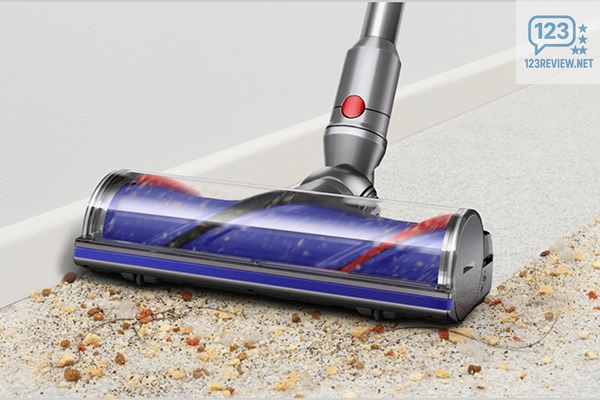Living in New York means living small — my apartment barely breaks 400 square feet. When I first moved in, I thought I could “organize later,” but clutter builds fast in tight spaces. Over time, I’ve learned that staying organized isn’t about having perfect shelves or minimalist furniture — it’s about daily rhythm, decisions, and knowing what not to keep.
In this article, I’ll share what’s worked for me: the systems, habits, and little hacks that make a small apartment not just livable, but peaceful.
My Morning and Evening Reset
Every day starts and ends with a quick reset. In the morning, I make my bed — it sounds trivial, but it sets the tone. After coffee, I spend five minutes clearing surfaces: the counter, the table, the small shoe rack by the door. Before bed, I do another five-minute sweep, putting things back where they belong. It’s not deep cleaning; it’s just maintenance.

I realized that clutter doesn’t explode all at once — it creeps in quietly. A jacket left on a chair, a delivery box that doesn’t get broken down, a coffee mug that stays on the counter. The reset stops that slow pile-up.
Smart Storage for a Small Space
In my apartment, everything has to justify its footprint. I use:
- Under-bed drawers for off-season clothes and linens
- Stackable boxes inside my closet to separate “keep,” “donate,” and “store”
- Wall hooks near the entrance for bags, keys, and jackets
- A foldable drying rack that slides behind the fridge when not in use
One rule I follow strictly: if it doesn’t fit, it doesn’t stay. That one sentence has probably saved me from drowning in stuff.
Furniture That Works Hard
I’ve become a big fan of furniture that multitasks. My coffee table lifts up for hidden storage, my sofa folds into a guest bed, and my small dining table doubles as a work desk.
The goal isn’t to fill every inch — it’s to keep the floor visible. Empty space makes a room feel calm, even if it’s small.
Decluttering Without Drama
Every two months, I do what I call a “mini move.” I open each drawer, shelf, and box, and ask: If I were moving tomorrow, would I pack this?
Most of the time, the answer is no. That mental trick turns decluttering from a chore into a decision-making exercise. The stuff I don’t need goes to donation bins nearby or to friends who can use it.
I also try not to keep “someday” items — those things we tell ourselves might be useful later. “Someday” rarely comes, especially in a city where space is gold.
Paper, Mail, and Digital Clutter
Paper clutter used to be my biggest weakness. Now, I sort mail the minute it arrives: bills scanned, ads recycled, and only essentials kept.
Digitally, I treat my desktop and phone the same way I treat my apartment — everything in its place, everything named clearly. I empty my downloads folder weekly. It’s amazing how freeing a clean desktop feels.
Cleaning As Therapy
I don’t think of cleaning as punishment anymore. I play a podcast, set a timer, and treat it like a reset ritual. Wiping counters or vacuuming the rug has become meditative — an easy way to clear mental noise along with dust.
The small victories add up: folded laundry, clean sink, floor space reclaimed. It’s a quiet reminder that control over your environment feeds peace of mind.
Hosting as Motivation
When I know someone’s coming over, I see my space differently. Hosting forces me to notice the corners I’ve ignored, the shelf that’s turned into a catchall. I don’t invite people often, but when I do, it keeps me honest about how my place looks and feels.
There’s something powerful about preparing your space for company — it reawakens gratitude for what you have, no matter how small.
The “One In, One Out” Rule
This is my golden rule. Whenever I buy something new — a jacket, a book, a gadget — something else has to go. It keeps balance and prevents that slow creep of excess.
I also take photos of things I donate or recycle, just to remember them. That way, I keep the memory without the object.
My Favorite Small-Space Organizing Tools
Here are a few items that have genuinely made a difference:
- A slim rolling cart between the washer and wall (perfect for detergents)
- Acrylic drawer dividers for my bathroom and kitchen drawers
- A collapsible hamper that fits inside a closet
- Label maker for cables, cords, and small storage bins
None of these are fancy — they just help my brain rest.
My Verdict
Keeping my apartment organized isn’t about being minimalist for minimalism’s sake. It’s about feeling lighter — mentally and physically — in a city that’s always rushing.
Every system I’ve built came from trial and error, and I still tweak them. But when I walk in after a long day and see a space that’s clear, calm, and genuinely mine, I remember why it matters.
Organization is less about control and more about care — for your time, your things, and the space you call home.
Written and tested by Chi Tran for 123Review.net.
Affiliate links may earn a commission, but opinions are my own.
Chi Tran is a tech and lifestyle reviewer based in New York City, exploring how simple tools make urban life smarter.









